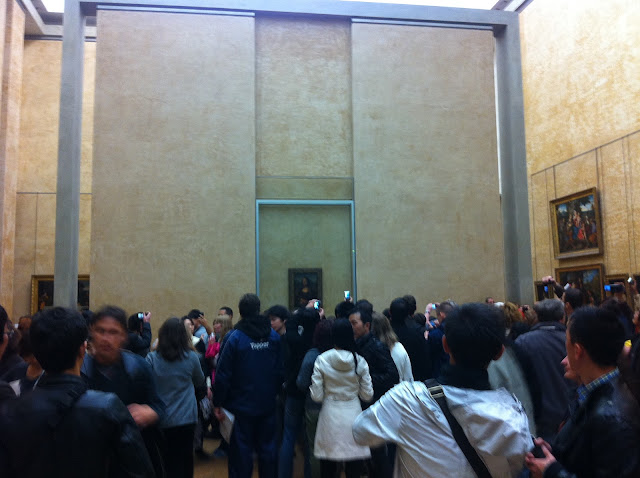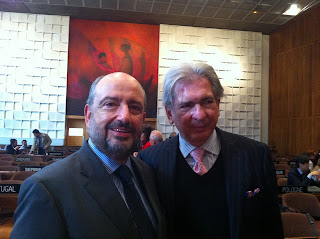by Emily Blyze, ARCA Alum 2009
Part four of a five-part weekend series
Principles 3, 4, and 5 of the Washington Principles are worthy of attention compared to the equivalent recommendations in the Terezin Declaration Looted Art Working Group (which happen to be 3, 4, and 5 as well). The Washington Principles address the issue of resources and personnel being available to facilitate identification of a Nazi confiscated work not restituted (3). If established that a work was confiscated and not restituted, consideration should be given to unavoidable gaps or ambiguities in the provenance in light of the passage of time (4). Efforts should also be made to publicize the work of art in order to locate its pre-War owners or heirs (5). By contrast, the WG recommendations state that export, citizenship, inheritance and cultural heritage laws should not be used to prevent the restitution of cultural property to claimants. The Principles make no mention of legal issues, whereas the recommendations from the WG that the 46 states modify restitution legislation and establish national claims procedures create a stronger point to be considered.
The WG Looted Art recommendation 7 asserts that Participating States should actively support the establishment and operation of an international association of all provenance researchers. The association should encourage cooperation between researchers, the exchange of information, the setting of standards, and education. The proposal to create an association is the first of its kind. It begs the question of why this has not been done before now.
A notable difference between the Washington Principles and the Terezin Declaration is the availability of information via the Internet. Relevant records and archives should be open and accessible to researchers, in accordance with the guidelines of the International Council of Archives, reads Principle 2 of the Washington Principles. Keep in mind the technology of 1998 was very sparse and the material that was recommended to be open and accessible was primarily documents and books. However, the openness and accessibility of the Internet today has offered up a whole new dimension. This is particularly significant with regard to Principle 6, which states that efforts should be made to establish a central registry. This conjures the questions of how it would be accomplished and by whom.
The guidelines that have been created are an initiative to address and bring awareness to the Nazi World War II era plundering of art. A practical mind would ask whether these guidelines are achievable. Museums have asked how effective and economical steps might be made towards correctly addressing their collections with proper provenance research. Specifically stated, the AAMD Commission recognizes that provenance research is difficult, expensive and time-consuming, often involving access to records that are hard or impossible to obtain, and that most museums lack the resources to accomplish this. The Washington Principles recommended that art confiscated by the Nazis and not subsequently restituted be identified. Terms in the Principles such as “should,” “encouraged,” and “fair and just solution” can be ambiguous and leave room for interpretation. Language with such vagueness is hard to define and leads to the question, how to proceed with the principles presented. Furthermore, the mechanics of conducting provenance research is a topic that has been mostly neglected in both art-historical literature and in academic programs, especially at a time when the museum profession is being required to draw increasingly upon a variety of disciplines in order to adapt and survive. Legal proficiency can surely occupy no lower a priority than the more general skills of economic literacy, resource management and commercial enterprise that have become so substantial a part of contemporary museum and gallery administration.
Museum professionals today are in need of a transferable and interdisciplinary skill set. Knowledge of art history, politics, the history of collections, and the locations of archival materials that document the movement of art, in addition to provenance research, (a fairly specialized methodology in its own right), are all essential.
From 1998 to 2009, the recognized guidelines have plotted out scenery of what provenance research should look like. However, has this been accomplished? Have museums taken a direction that is suitable? On September 3, 2003 the AAM created a website aptly named the
Nazi-Era Provenance Internet Portal (NEPIP). The Internet Portal provides a searchable online registry of objects in U.S. museum collections that changed hands in Continental Europe during the Nazi Era (1933-1945). Since the website was established, more than 28,000 objects have been posted by 165 U.S. art museums.
In 2001, The AAM Guide to Provenance Research was written by Nancy Yeide. The comprehensive AAM Guide is divided into two parts. Part One is an overview of basic provenance research and principles. Instruction is given on how to gather information from the work itself and how to use primary and secondary sources. It also has a template on how to write a provenance record used by several major museums such as the National Gallery of Art, Washington, D.C., Los Angeles County Museum of Art, and Museum of Fine Arts, Boston. Part Two discusses Holocaust-Era provenance research and how research should be prioritized. A significant aspect of the AAM Guide is the appendix and a list of selected bibliographies on the history of collecting, research resources, dealer archives and locations, resources for auction sales and exhibitions. “Red-flag” names from The Art Looting Investigation Unit (ALIU) are present, as well as a list of consolidated and detailed interrogation reports and Einsatzstab Reichsleiter Rosenberg (ERR) codes. The ERR was the Nazi organization that carried out confiscations of Jewish property in occupied countries. Confiscations by the ERR in France alone total almost 17,000 objects from more than 200 families. The meticulous cataloguing of the collections confiscated was organized by codes assigned to the families from whom the objects were looted.
 Donny George,Iraq National Museum
Donny George,Iraq National Museum
 No comments
No comments
 Donny George,Iraq National Museum
Donny George,Iraq National Museum
 No comments
No comments









